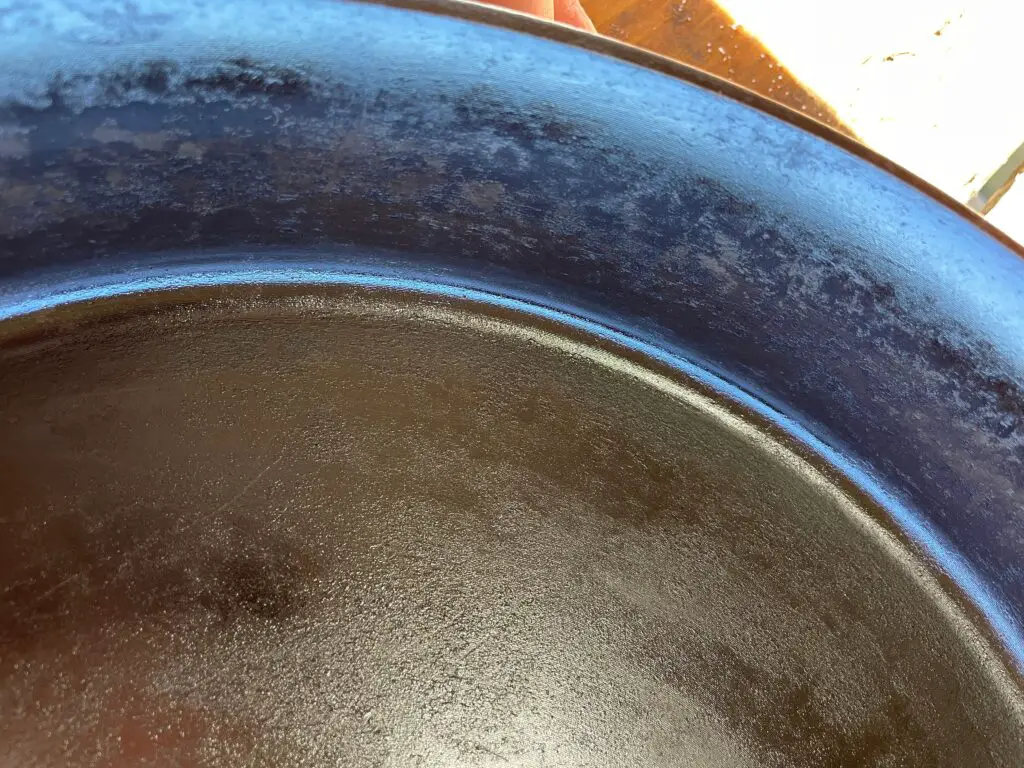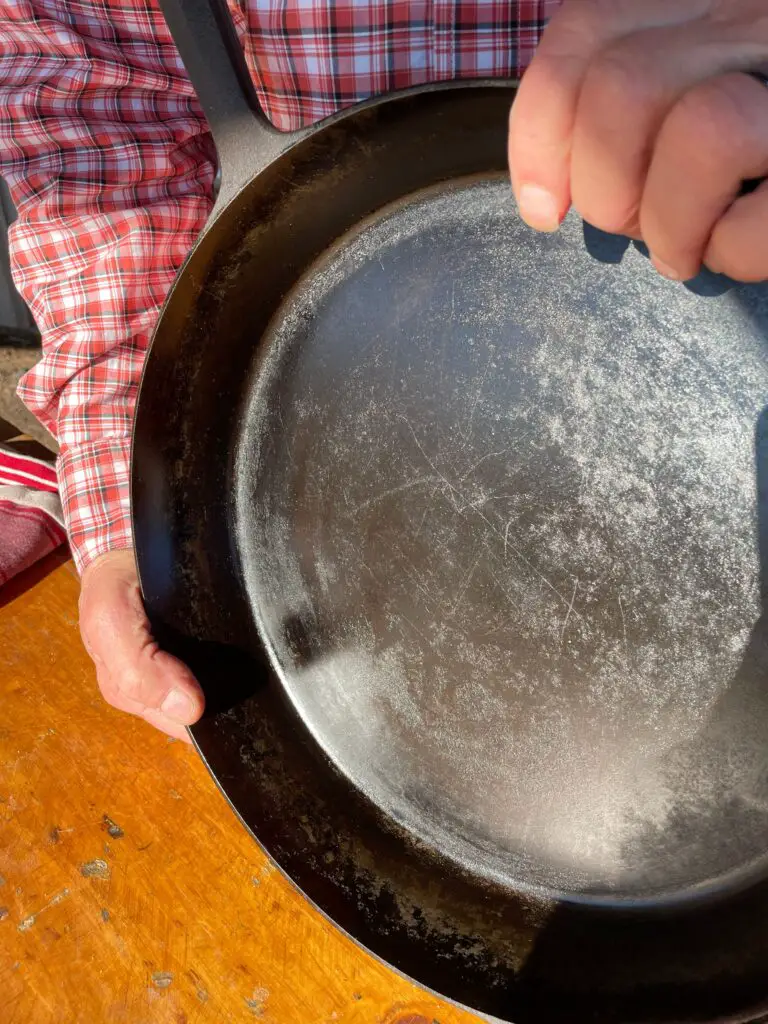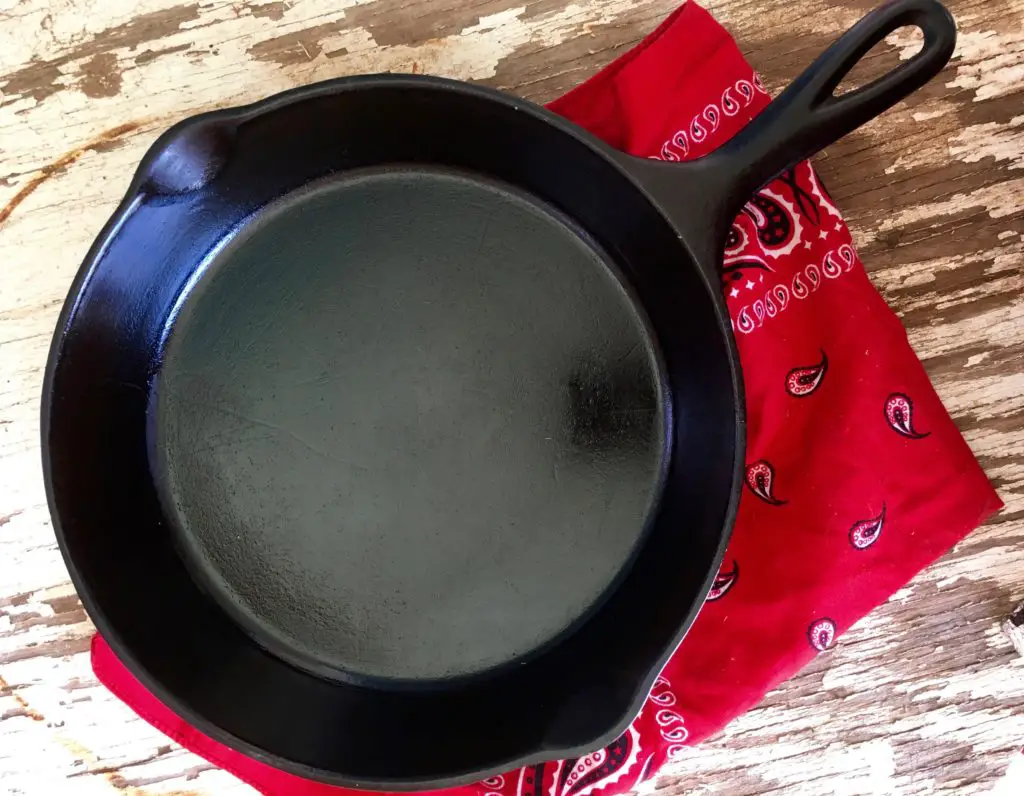Cast Iron Seasoning Flaking?

Howdy y’all and thanks for stopping by on a beautiful afternoon here in Oklahoma. I have had a lot of questions from you guys lately about cast iron seasoning. I’ve got a whole video playlist here that will help you take care no matter what your problem is. Today, I’m focusing on flaking.
Let’s start with the basics. What is seasoning? It’s a thin coat of oil that is rubbed on hot cast iron. The oil bonds with the metal, and over time a beautiful non-stick surface is created. Cast iron helps cooks better control the heat of their meal because it holds heat longer and evenly. It’s why I love it.

See that flaking on the sides there in the image above? There are a couple of good reasons that your cast iron skillet may be flaking on the side like that. First, if your seasoning is new, it will flake if you are cooking acidic foods in the skillet. By acidic I’m talking about anything tomato based, high in citric acid, etc.
The most common reason for the side wall of cast iron to flake is oil running down onto the bottom of the skillet during the seasoning process.
Now, if you look at the picture of the skillet above, you’ll see some flaking along the edges. It is important that we remove the flaking before we re-season this skillet.
To remove flaking from cast iron, rub regular old table salt all over the skillet with a lint-free cloth.
The salt is hard enough to remove the flakes without being so hard as to remove the rest of the seasoning. Once you’ve rubbed the salt around and the flaking is completely gone, your cast iron will be as smooth as a baby’s bottom. Remove the salt from the skillet.
If you’re working inside, preheat your oven to 375. If you don’t have an oven, go ahead and pre-heat your grill. If you don’t have an oven or a grill, you can use the stove-top. People who don’t have an oven often get discouraged at this part – but don’t. Get the stovetop burner going at 375 or medium heat. In just a minute, I’m going to explain to you how to get the cast iron hot enough all over using just the stove-top burners here in a minute.
Start with Grapeseed Oil. Using a lint-free cloth, rub the oil into the bottom and sides of the skillet. Make sure you remove all excess oil.
Remove all excess oil after seasoning, or you’re going to be left with sticky cast iron.

I’m sure y’all know by now that part of the seasoning process is to set the freshly-oiled cast iron into a hot oven or grill for a good while. We want to prevent all of the oil from seeping down the sides to the bottom of the cast iron. To do this, place the cast iron upside down on a cookie sheet or a large piece of aluminum foil when you put it in the oven.
Place the cast iron upside down on a cookie sheet in the hot oven so the oil doesn’t seep into the bottom of the skillet.
If you are using an oven: Set cast iron inside a 375 degree oven for 45 minutes to an hour. Turn the heat off and let the cast iron cool down along with the oven.
If you are using a grill: Get the grill as close to 375 degrees as you can and place over indirect heat for 45 minutes to an hour. Let the cast iron cool down along with the grill.
If you are using a stove-top: You will need an oven-proof bowl or metal washtub or stockpot that is larger than the cast-iron. If you don’t have any, you can create one out of aluminum foil. Pre-heat the burner on medium heat, and do your best to create an air-tight covering for the cast iron. This will trap the heat inside to create an oven-like atmosphere and allow the oil to bond to the cast iron.
Heating the cast iron upside down will give the oil time to bond to the sides of the cast iron and prevent future flaking. You will want to do this regularly.
After the cast iron cools, remove all excess oil to prevent residue.
My favorite thing about cast iron is that it is tough. It doesn’t have to be perfect – if your cast iron is slick and smooth you’re in great shape.

As always, I thank you for stopping by the website. Don’t forget to subscribe to our YouTube Channel and click “like” on all of your favorite videos. Our cast iron playlist will answer a lot of your questions about cast iron, but if you have anymore, please leave us a comment below.
